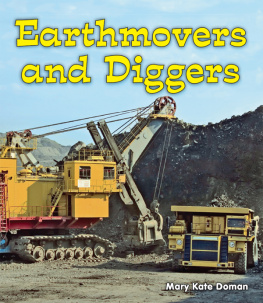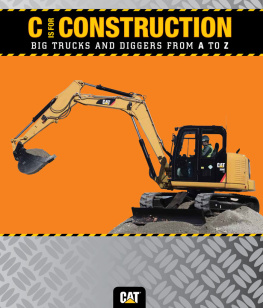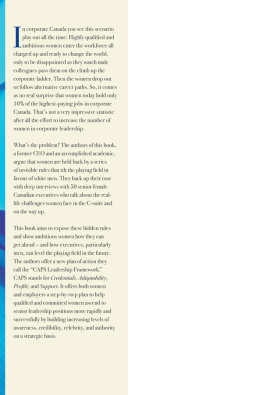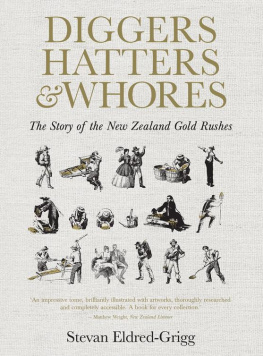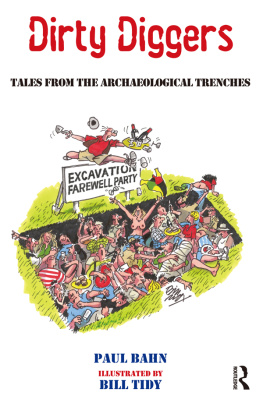THE INVISIBLE DIGGERS - A STUDY OF BRITISH COMMERCIAL ARCHAEOLOGY
Oxbow Books and the individual author 2009.
ebook revised 2nd edition 2012.
Oxbow Books, 10 Hythe Bridge Street, Oxford OX1 2EW
www.oxbowbooks.com
All rights reserved. No part of this publication may be reproduced, stored in a
retrieval system, or transmitted in any form or by any means, electronic, mechanical,
photocopying, recording or otherwise, without the prior written permission of the
copyright owners.
A CIP record of this book is available from The British Library
ISBN: 978-1-905933-10-5
PDF ISBN: 9781842176894
EPUB ISBN: 9781842176870
PRC ISBN: 9781842176887
This book is available direct from
Oxbow Books, 10 Hythe Bridge Street,
Oxford OX1 2EW
(Phone: 01865-241249 Fax: 01865 794449)
and
The David Brown Book Company
PO Box 511, Oakville, CT 06779, USA
(Phone: 860-945-9329 Fax: 860-945-9468)
and
via www.oxbowbooks.com
Front cover photos Dave Webb: http://www.archdiggers.co.uk/Diggers_Home.aspx
CONTENTS
FIGURES
TABLES
ACKNOWLEDGEMENTS
Thanks are due to all those who contributed to, commented on, and made possible, the first edition of this book and its former life as my doctoral thesis, in particular Stephanie Moser, John Schofield, Tim Hughes, Tom Vannozzi, Darren Glazier, Paul Donohue, Dom Barker, Peter Hinton, Nick Armour, Joan and Alan Everill, and Karen. In addition I would like to thank Phil Marter for his comments during the preparation of the second edition,
I am, of course, utterly indebted to all of the archaeologists who have participated in the research process with me, both formally and informally, and who have helped shape this study. Sadly, and perhaps ironically, it is not possible to thank individually those who participated in the interviews and the online surveys, but I am very grateful indeed for their willingness to take part. I am also very grateful to Dave Webb, for allowing me to use a number of his photographs, and to Jon Hall and Vicki Herring for sending me some of their cartoons. I also wish to thank the family of the late Philip Barker for allowing me to include several pieces of his artwork.
Finally I would like to thank my young son, George, for all the smiles and laughter. I hope that when hes older he gets as much enjoyment from archaeology as I do.
PREFACE TO THE SECOND EDITION
Since the First Edition of this book was published in 2009 there have been a number of developments that have impacted on professional archaeological practice in the UK. Some of these were in preparation, but some were impossible to predict. As expected, Planning Policy Guidance Note 16 (PPG16) gave way to Planning Policy Statement 5 (PPS5) in 2010, but that in itself proved a most short-lived document and was replaced in turn by the National Planning Policy Framework (NPPF) in March 2012. It seems that the effect to date on commercial archaeology has actually been minimal through what could have been a very disruptive period, but it remains to be seen if the Coalition Governments push to encourage development might ultimately have more twists to come. Certainly the NPPFs presumption in favour of sustainable development could cause significant problems for the sector in the next few years. Thankfully the document does include reference to the preservation of heritage assets, despite initial concern that it wouldnt, so not all of PPG16s good work has been undone. Of perhaps greater concern have been the widespread redundancies in the sector caused by the global economic crisis since 2008, and subsequent double dip recession in the UK. The scale of these redundancies could only be guessed at when the First Edition came out.
Consequently there was a need for a follow-up to the Invisible Diggers quantitative survey undertaken in 2005, in order to examine the effect of those redundancies on the demographic structure of commercial archaeology. The production of a Second Edition provides an opportunity to best disseminate the findings of the 2012 survey, and provide some other modest revisions to bring the text up-to-date. Despite the fact that much of the text remains unchanged, this is also an opportunity to present this research as an e-book, which will be distributed for free by the publishers, and consequently I hope that it will receive greater exposure than its predecessor.
In format, the book remains largely the same. Part One provides an historical background, documenting the development of developer-led archaeology from its roots in the largely volunteer rescue excavations. There is also a consideration of the perception of fieldwork as labouring, from the earliest excavations through to the present. Part Two presents the analysis of the data gathered for this study. Beginning with quantitative data provided by the two surveys of commercial archaeologists that I have undertaken, a portrait is painted of the people employed in that sector before moving on to discuss the written submissions that many respondents included when submitting the first survey. These chapters present and then develop certain key themes, and the subsequent analysis of extensive qualitative interviews with 28 participants allows these themes to be considered in far greater detail. The thematic analysis of the interviews is divided into two chapters one considering the career paths of the participants which sandwich the analysis of a participant observation study undertaken over two months in 2004/5.
I believe that this research provides a fascinating insight into the working environment of commercial archaeologists and demonstrates how camaraderie and love of their job is often just enough to outweigh the adversity they face in the form of low wages, poor employment conditions and limited career prospects.
INTRODUCTION
This study is an exploration of archaeological practice. Its specific focus is on the relationships encountered and enacted by archaeologists within a neglected sector of the discipline in the UK - commercial archaeology. These include the physical relationship between the archaeologist and the archaeological remains, through which both are defined; the employer-employee relationship; and the inter-personal relationships that provide camaraderie and support. Whilst much has been written on the excavation process there is rarely discussion of the fragmentation of the role and specialisms of the commercial field archaeologist. Thus, despite academic reflections upon the nature of archaeological fieldwork (eg Tilley 1989; Cumberpatch and Blinkhorn 2001; Lucas 2001a, 2001b; Jones 2002; Edgeworth 2003) and an increasing recognition that the archaeological process is, to a certain extent, determined by the organisation and structure of the profession, there has been no systematic study of the commercial sector in archaeology. This neglect reflects the somewhat nave assumption that the commercial practice of archaeology is inconsequential to the history and changing nature of archaeology; an omission which I intend to address during the course of this study.
A crisis in commercial archaeology
Just as PPG16 transformed archaeology at a stroke, an effort of will and imagination could turn our current weaknesses inside out. We could convert our state of fragmentation, introspection and caution into one of coherence, buoyancy, and confidence for the future. (Richard Morris 1994)
Im an archaeologist, my career is in ruins. This is more than just a bad joke, it is an accurate description of the position of the vast majority of commercial field archaeologists in Britain. The move towards predominantly developer-funded archaeology during the 1980s, and the now well-established system of competitive tendering, have forever changed the nature of the archaeological profession. Some argue, not without reason, that the introduction in 1990 of Planning Policy Guidance (Note 16), PPG16, which made archaeology a consideration of planning consent, has meant that there are currently more jobs and better wages than ever before for archaeologists working in that sector. It is also true that this explosion has created whole new ways in which archaeological practice is conceived and practised, from the desk-based assessment to the field evaluation of archaeological remains. Yet it is an undeniable fact that a large number of commercial archaeologists see a crisis being caused by the current system (Fahy 1987; Goodfellow 1990; Morris, R. 1993; Howe 1995; Sparey Green 1995; Hardy 1997; Anon 1998; Cooper Reade 1998; Denison 1999) and this crisis, if left unchecked, has significant ramifications for the whole discipline.




